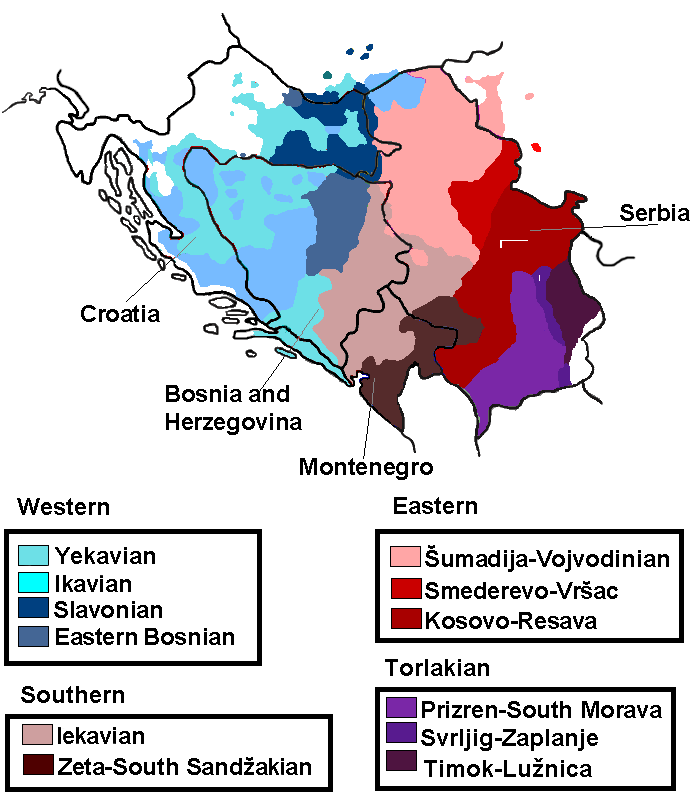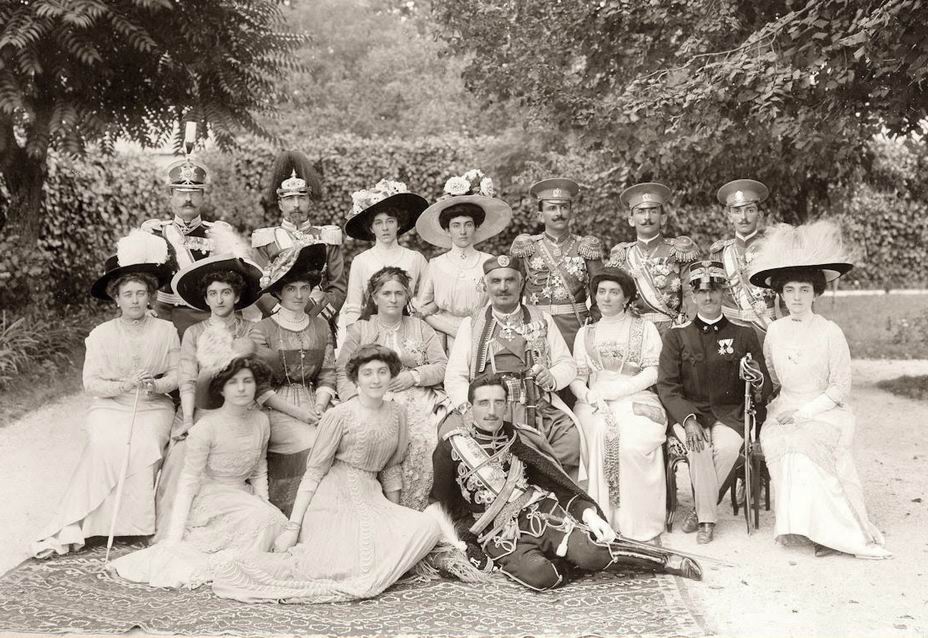|
People's Party (Montenegro, 1906)
The People's Party (, abbr. НС/ NS), also known as the Klubaši or the Narodnjaci, was a political party in the Principality of Montenegro and the Kingdom of Montenegro. The party represented the opposition to King Nikola I. The People's Party main political goal was the dethroning of the Petrović-Njegoš dynasty and the unification of Montenegro and Serbia. The founder of the party was Šako Petrović-Njegoš, Nikola I's cousin, other notable founding members of the party included Andrija Radović, Marko Radulović and Mihailo Ivanović. As a response to the formation of the People's Party in 1907, Petrović-Njegoš dynasty loyalists organised themselves into the True People's Party, also known as the ''Rightists''. Background The Assembly of Montenegro was formed by the 1905 Constitution. The People's Party was first formed in 1906, when 27 deputies of the Assembly of Montenegro (out of 60, elected in 1905 election for the Constitutional Assembly) decided to form a cl ... [...More Info...] [...Related Items...] OR: [Wikipedia] [Google] [Baidu] |
Andrija Radović
Andrija Radović ( sr-cyr, Андрија Радовић; 1872–1947) was a Montenegrin politician and statesmen, former Prime Minister and leader of the People's and then Democratic Party, fighter for parliamentary democracy and chief proponent of Montenegro's unification with Serbia. Youth Andrija Radović was born to father serdar Jagoš in the village of Martinići, Danilovgrad into the Bjelopavlići clan, in the still unrecognized Principality of Montenegro on 28 January 1872. After finishing the elementary and secondary schools in Cetinje, he went to professionalize in the Kingdom of Italy studying engineering at the Artillery-Engineering Academy from 1890 to 1894 as Nicholas' Pioneer. Upon returning, he got the job as the Military Engineer later raising to the position of Secretary of the Military Council and Court Marshal. At the end of the century, he was appointed by President of the State Council Božo Petrović-Njegoš as State Engineer, Director of Public Works a ... [...More Info...] [...Related Items...] OR: [Wikipedia] [Google] [Baidu] |
Yugoslav Democratic Party
The Yugoslav Democratic Party, ''State Party of Serbian, Croatian and Slovene Democrats'' and Democratic Party, also known as the Democratic Union was the name of a series of liberal political parties that existed in succession in the State of Slovenes, Croats and Serbs and the Kingdom of Serbs, Croats and Slovenes (later the Kingdom of Yugoslavia). History Yugoslav Democratic Party The Yugoslav Democratic Party () was a Slovenian liberal political party, founded in June 1918 from the merge of all three Slovene national liberal parties that had been formed since the 1890s in the Slovene-speaking parts of Austria-Hungary: the National Progressive Party in Carniola, the National Party in Styria, and the National Progressive Party in Gorizia and Gradisca. Prominent members included Ivan Tavčar, Ivan Hribar, Albert Kramar, Gregor Žerjav, and Milko Brezigar. State Party of Serbian, Croatian and Slovene Democrats In the Spring of 1919, in Sarajevo, the State Party of Serbian ... [...More Info...] [...Related Items...] OR: [Wikipedia] [Google] [Baidu] |
1905 Montenegrin Parliamentary Election
National Assembly elections were held in Montenegro on 27 November 1905."News in Brief" ''The Times'', 6 November 1905, p5, issue 37857 They were the first elections in the country's history, and were called to elect a National Assembly that would approve a constitution.History Parliament of Montenegro Background Prince had issued a manifesto on 5 November 1905 announcing the establishment of a representative assembly with free elections. One member was elected from each of the 56 military districts of the country, with a further four members elected from |
People's Party (Montenegro, 1990)
The People's Party (, abbreviated НС/NS) was a conservative political party in Montenegro. History The party was established in 1990, after a multi-party system was introduced in Montenegro, and was named after the historical People's Party. Notable party founders include Novak Kilibarda, Matija Bećković, Božidar Bojović, Pavle Milić, Jovan Markuš, Dragan Šoć, Momir Vojvodić and Bogoljub Šijaković. The People's Party opposed Slobodan Milošević's regime in Serbia and his supporters in Montenegro during the 1990s. It joined DPS and SDP in 1998 election, and it participated in Government with the two until 2001. But, when DPS and SDP openly stated that they are proponents of full Montenegrin independence. People's Party of Montenegro left the coalition and the Government. Afterwards, it was mostly in coalition with pro-union with Serbia parties. After the referendum, the People's Party refused to acknowledge the result due to allegations of irregularities. Af ... [...More Info...] [...Related Items...] OR: [Wikipedia] [Google] [Baidu] |
Podgorica Assembly
The Great People's Assembly of the Serb People in Montenegro (), commonly known as the Podgorica Assembly (, ), was an ''ad hoc'' popular assembly convened in November 1918, after the end of World War I in the Kingdom of Montenegro. The committee convened the assembly with the aim of facilitating an unconditional union of Montenegro and Kingdom of Serbia, Serbia and removing Nicholas I of Montenegro, Nikola I of Montenegro from the throne. The assembly was organised by a committee supported by and coordinating with the government of the Kingdom of Serbia. The unification was successful and preceded the establishment of the Kingdom of Serbs, Croats and Slovenes as a unified state of South Slavs by mere days. The unification was justified by the need to establish a single Serbian state for all Serbs, including Montenegro whose population as well as Nikola I felt that Montenegro belonged to the Serbian nation and largely supported the unification. Nikola I criticised the Podgorica ... [...More Info...] [...Related Items...] OR: [Wikipedia] [Google] [Baidu] |
Lazar Mijušković
Lazar Mijušković ( sr-cyrl, Лазар Мијушковић; 24 December 1867 – 29 September 1936) was a Montenegrin politician and diplomat. Biography Mijušković was born on 24 December 1867 in the village of Povija in Pješivci, in the Principality of Montenegro. He obtained a degree as a mining engineer in Paris, France. He performed the duty of Minister of Finance in Government of Principality of Montenegro from June 1903 to December 1905. He also served two terms as the President of the Ministerial Council (Prime Minister of Montenegro). Mijušković was leader and one of the founders of the True People's Party, founded in 1907. From 13 October 1913 to 1915 Mijušković was appointed as the ambassador of Montenegro in Belgrade Belgrade is the Capital city, capital and List of cities in Serbia, largest city of Serbia. It is located at the confluence of the Sava and Danube rivers and at the crossroads of the Pannonian Basin, Pannonian Plain and the Balkan Penin ... [...More Info...] [...Related Items...] OR: [Wikipedia] [Google] [Baidu] |
Kingdom Of Serbia
The Kingdom of Serbia was a country located in the Balkans which was created when the ruler of the Principality of Serbia, Milan I of Serbia, Milan I, was proclaimed king in 1882. Since 1817, the Principality was ruled by the Obrenović dynasty (replaced by the Karađorđević dynasty for a short time). The Principality, under the suzerainty of the Ottoman Empire, ''de facto'' achieved full independence when the very last Ottoman troops left Belgrade in 1867. The Treaty of Berlin (1878), Congress of Berlin in 1878 recognized the formal independence of the Principality of Serbia, and in its composition Nišava District, Nišava, Pirot District, Pirot, Toplica District, Toplica and Vranje districts entered the Southern and Eastern Serbia, South part of Serbia. In 1882, Serbia was elevated to the status of a kingdom, maintaining a foreign policy friendly to Austria-Hungary. Between 1912 and 1913, Serbia greatly enlarged its territory through engagement in the First Balkan War, Fi ... [...More Info...] [...Related Items...] OR: [Wikipedia] [Google] [Baidu] |
Pan-Serbism
The term Greater Serbia or Great Serbia () describes the Serbian nationalist and irredentist ideology of the creation of a Serb state which would incorporate all regions of traditional significance to Serbs, a South Slavic ethnic group, including regions outside modern-day Serbia that are partly populated by Serbs. The initial movement's main ideology (Pan- Serbism) was to unite all Serbs (or all territory historically ruled, seen to be populated by, or perceived to be belonging to Serbs) into one state, claiming, depending on the version, different areas of many surrounding countries, regardless of non-Serb populations present. The Greater Serbian ideology includes claims to various territories aside from modern-day Serbia, including the whole of the former Yugoslavia except Slovenia and part of Croatia. According to Jozo Tomasevich, in some historical forms, Greater Serbian aspirations also included parts of Albania, Bulgaria, Hungary and Romania. Its inspiration comes from t ... [...More Info...] [...Related Items...] OR: [Wikipedia] [Google] [Baidu] |
Nikola I Petrović-Njegoš
Nikola I Petrović-Njegoš ( sr-Cyrl, Никола I Петровић-Његош; – 1 March 1921) was the last monarch of Montenegro from 1860 to 1918, reigning as prince from 1860 to 1910 and as the country's first and only king from 1910 to 1918. His grandsons were kings Alexander I of Yugoslavia and Umberto II of Italy, among others. Biography Early life Nikola was born in the village of Njeguši, the home of the reigning House of Petrović. He was the son of Mirko Petrović-Njegoš, a celebrated Montenegrin warrior (an elder brother to Danilo I of Montenegro) and his wife, Anastasija Martinovich (1824–1895). After 1696, when the dignity of vladika, or prince-bishop, became hereditary in the Petrović family, the sovereign power had descended from uncle to nephew, the vladikas belonging to the order of the black clergy (i.e., monastic clergy) who are forbidden to marry. A change was introduced by Danilo I, who declined the episcopal office, married and converted Monte ... [...More Info...] [...Related Items...] OR: [Wikipedia] [Google] [Baidu] |
True People's Party
The True People's Party (, abbr. ПНС/ PNS), also known as the Pravaši (''Rightists''), was a conservative and monarchist political party in the Principality of Montenegro and the Kingdom of Montenegro, founded in 1907. The party represented the government, the rule of the Prince and later on the rule of King Nikola I. The True People's Party was led by Lazar Mijušković and notable party members included Jovan S. Plamenac, Marko Đukanović, Ivo Đurović, Sekula Drljević, Filip Jergović, Krsto Popović, Mitar Martinović and Milutin Vučinić. Montenegrin politics during the time of the party existence was deeply divided on the issue of supporting Nikola I's absolutist rule in order to retain the independence of Montenegro, and for advocating the unification of Montenegro and Serbia under the Karađorđević dynasty, as advocated by the opposition People's Party (NS). History The party was founded in 1907 by Prince Nikola I due to the People's Party boycott during ... [...More Info...] [...Related Items...] OR: [Wikipedia] [Google] [Baidu] |
Petrović-Njegoš Dynasty
The House of Petrović-Njegoš (Serbian Cyrillic alphabet, Serbian Cyrillic: , / ) is an old Serbian medieval nobility, Serbian noble family that ruled Montenegro from 1697 to 1918. History Origin "Bogut" or "Boguta" is believed to be the oldest known ancestor of the Petrović-Njegoš family. Bogut was alive at the time of the Battle of Velbazhd (1330) and the building of Visoki Dečani, and perhaps into the 1340s.Etnografski muzej Cetinje 1963, p. 75 According to tradition, and recorded by some historians, the ancestors of the Petrović family settled in Muževice at the end of the 14th century, from the Bosnia region, from the area of Zenica or Travnik. It is possible that Bogut at that time had moved to Drobnjaci with his son, Đurađ Bogutović.Srpsko istorijsko-kulturno društvo "Njegoš" u Americi 1983, p. 73 Đurađ or some of his sons were in the entourage of Marko Drago, an affluent Serbian medieval nobility, Serbian nobleman who had served Serbian lord Vuk Branković ... [...More Info...] [...Related Items...] OR: [Wikipedia] [Google] [Baidu] |



